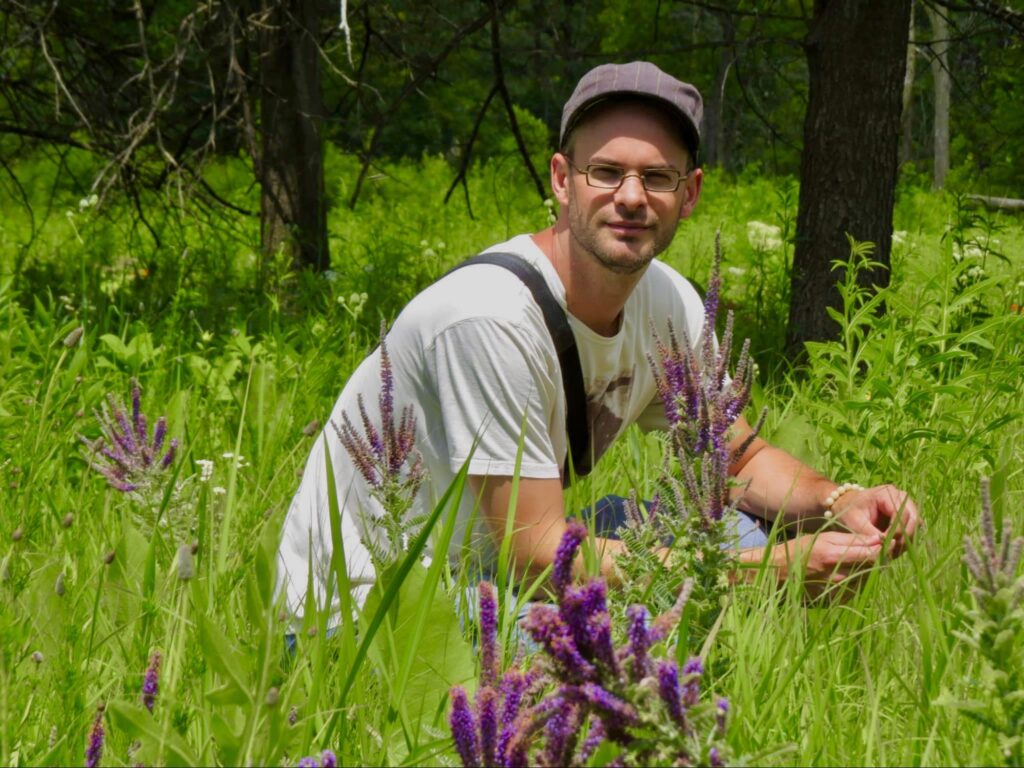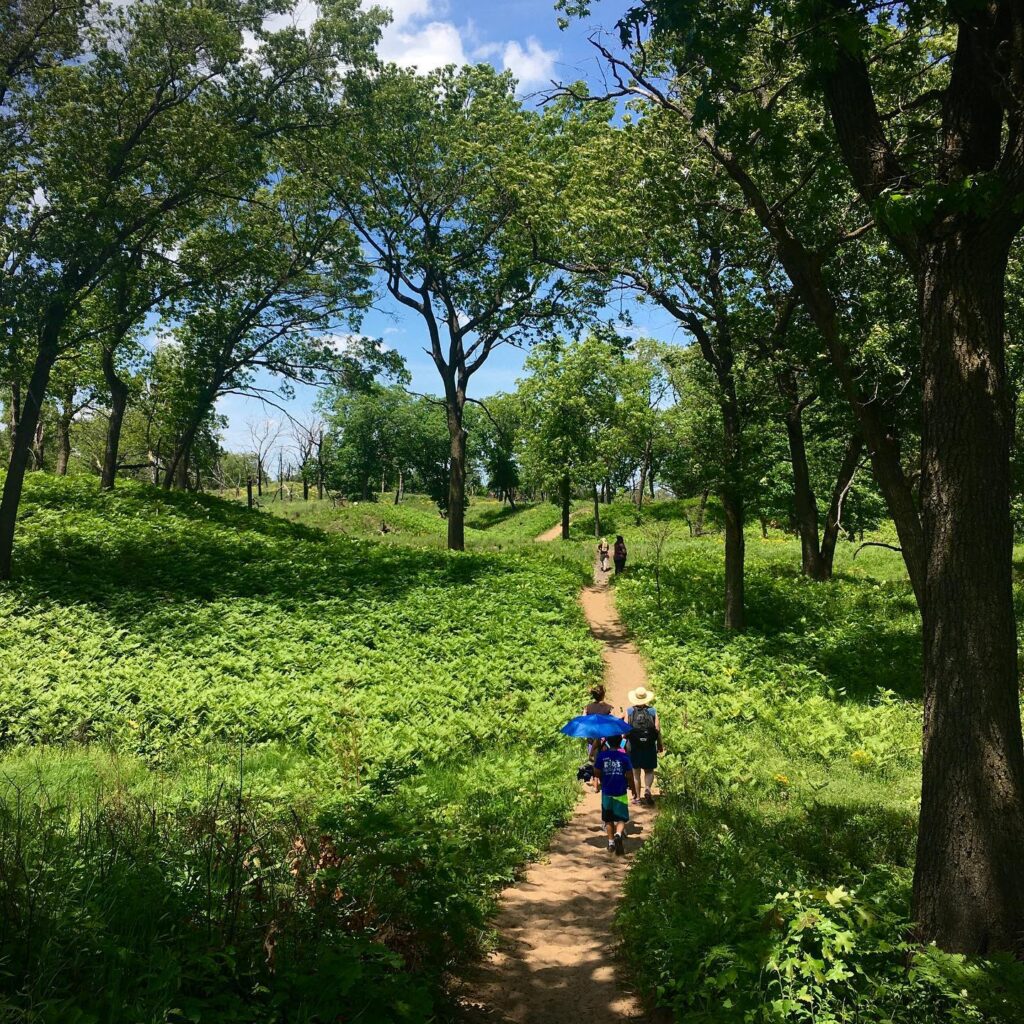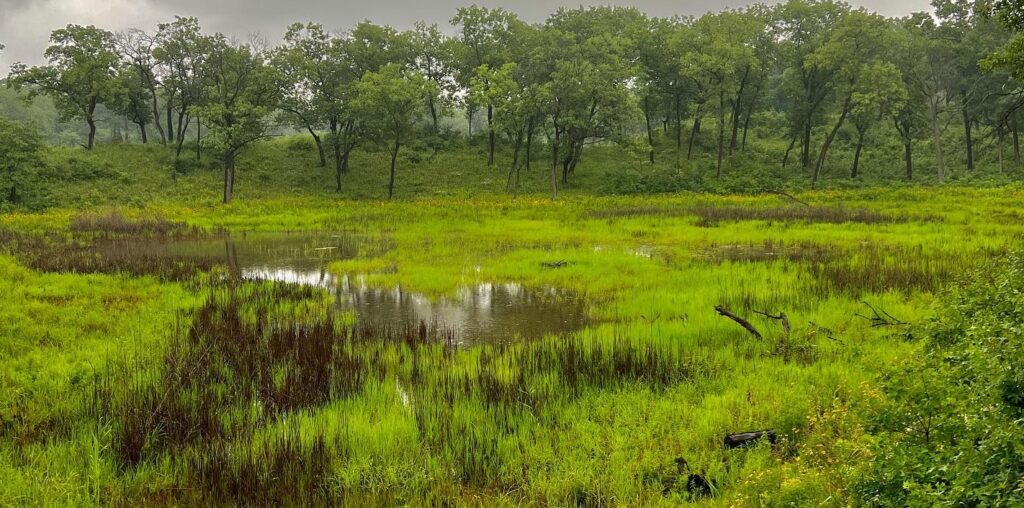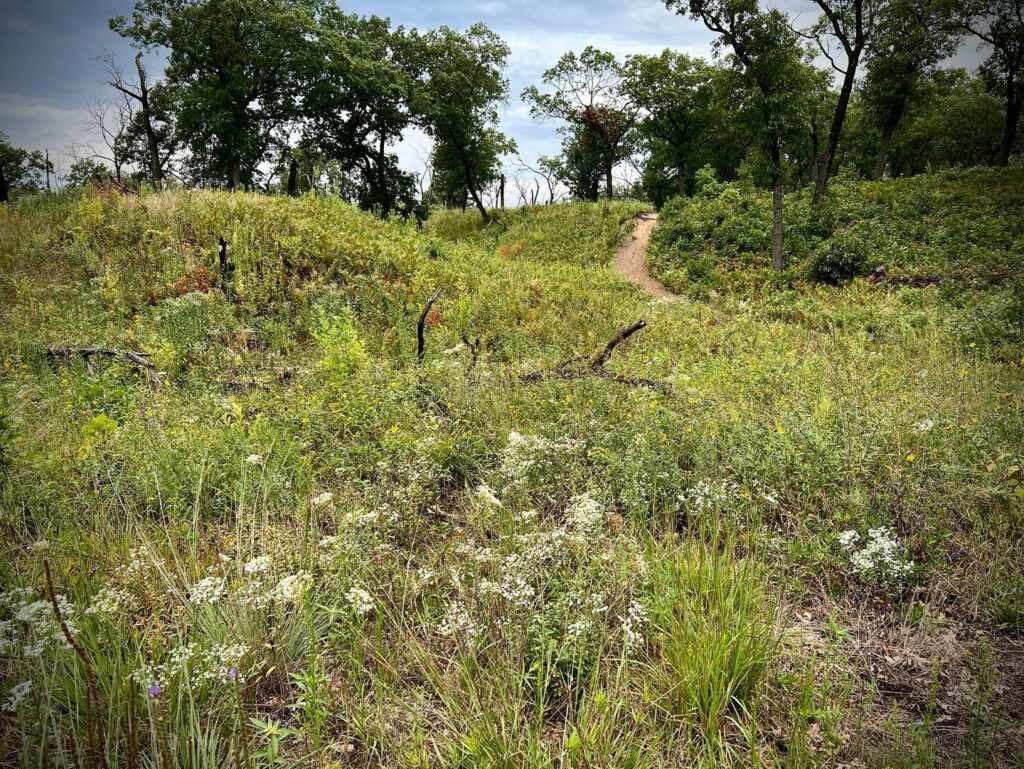Tour of Miller Woods
Saturday, July 27
11:00am (Eastern) / 10:00am (Central)
with Mike Weis, Dropseed! Native Gardens & Ecological Restoration

KAWO member Mike Weis will lead a tour of arguably one of the highest quality Black Oak Savannas in the country. Miller Woods, a 1,000-acre site in the City of Gary, is the western property of the Indiana Dunes National Park. This property has three globally rare ecosystems – black oak savanna, dune and swale habitat, and pannes. The hike from the nature center to the lake is like walking through ecological succession history. From the oak savanna you will pass through ancient dunes, ancient shorelines, interdunal wetlands, lagoons, ridge and swale, pannes, a brief pine forest, dune blowouts, foredunes, sedge meadow and finally the beach (which is typically secluded at this spot with a beautiful view of the Chicago skyline).

Location: The tour will begin at the parking lot of the Paul H. Douglas Nature Center at 10:00am Central Time (11:00am Eastern). It takes about one hour and 45 minutes to drive there from Kalamazoo (and don’t forget about the time change!). The trail to the beach is 3.5 miles in total, but it’s an out-and-back so you may turn around at any point along the hike. It’s moderate difficulty and dry. There aren’t any steep sand dunes to climb like in the Dunes State Park.
This quick trip through natural history is what caught the eye of Henry C. Cowles, the father of modern ecology, in the late nineteenth century. It was here where he began his groundbreaking observations of ecological succession, which formed the beginning of the study of ecology. Miller Woods is unique in that the fire cycle has pretty much continued from the thousands of years of stewardship of the native peoples through today, which is one of the reasons why this system is so high in quality. During most of the twentieth century the land was owned by the United States Steel Company. The company never developed it but did run railroad tracks and spurs through it, which caused sparks and wildfires to flare up frequently. The land was acquired by the National Park Service in 1976 through the expansion bill. The bill, the environmental study center, and the Miller Woods hiking trail were named after Illinois senator Paul Douglas, who was a fierce advocate of the preservation of the Indiana Dunes.


Miller Woods has over 520 native plants, many of which are state endangered. State and federally-listed plant and wildlife in Miller Woods include the piping plover, Blanding’s turtle, and Pitcher’s thistle. There are many other botanical surprises here including a ground-cover of New Jersey Tea as far as the eye can see, the rare Prairie Fameflower (Phemeranthus rugospermus) and loads and loads more. Every season throughout the year offers spectacular discoveries.

There are some great places to have lunch nearby on Lake Street – Miller Pizza Company, Vibrations, Clutch Bagels, and 18th Street Brewery. If you’re looking for more botanizing there are a lot of options in the vicinity, including Cowles Bog (the most biodiverse property in the Indiana Dunes), Tolleston Dunes (another high-quality oak savanna), Indiana Dunes State Park (trail 9 is out of this world!), Cressmoor Prairie (a super rare Black Soil Prairie remnant) and Mnoke Prairie.
The Miller Beach community is worth a tour of its own. It has a rich history of a sort of weekend getaway for Chicago’s artists, musicians and writers. Authors Nelson Algren and Simone De Beauvoir had a cottage here and there’s even a Nelson Algren Musem.
